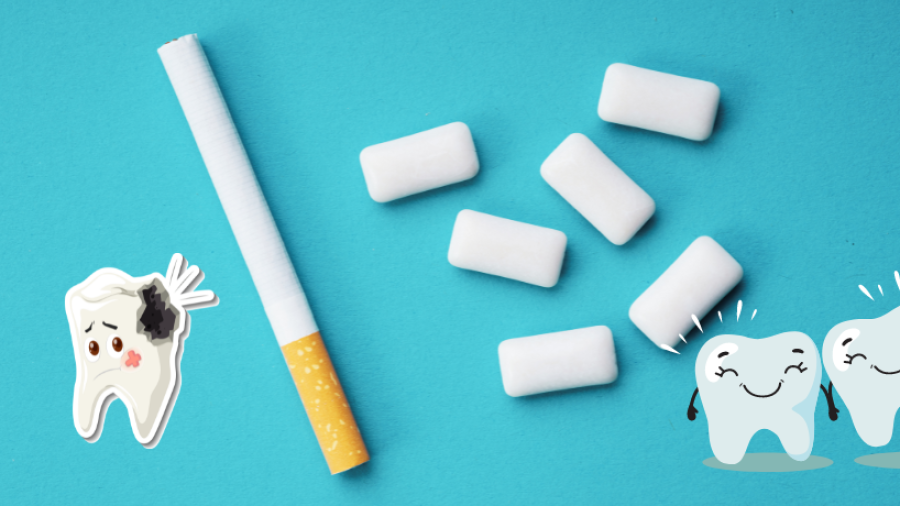Quitting smoking is one of the best decisions you can make for your health, yet it remains a challenging task. In India, over 80% of smokers express a desire to quit, but many struggle to follow through. Quit smoking chewing gum is a proven tool that can help ease the process by reducing withdrawal symptoms and cravings. Whether you opt for nicotine or nicotine-free gum, using it correctly is key to its success.
In this guide, we’ll cover the top 10 expert tips for making the most of quit smoking chewing gum, ensuring that you get the best results on your journey to a healthier, smoke-free life.
1. Choose the Right Type of Gum
There are two main types of quit smoking gum: nicotine gum (such as Nicorette) and nicotine-free gum. Nicotine gum delivers a controlled dose of nicotine to help reduce cravings and withdrawal symptoms. It’s ideal for heavy smokers who struggle with strong nicotine dependence. Nicotine-free gum, on the other hand, serves as a psychological substitute, providing a distraction without introducing nicotine. Choose the type that best fits your needs based on your smoking history and preferences.
2. Master the “Chew and Park” Technique
Nicotine gum isn’t like regular chewing gum; it requires a specific technique called “chew and park.” Chew the gum until you feel a tingling or peppery sensation, then park it between your cheek and gums. This allows the nicotine to be gradually absorbed into your bloodstream. Chewing too fast can release too much nicotine at once, leading to side effects like hiccups or nausea. Use this method to ensure a smooth release of nicotine, which helps control cravings more effectively.
3. Set a Usage Schedule
Plan when to use the gum based on your smoking triggers, such as after meals, during stressful moments, or when cravings hit hardest. Setting a clear schedule will help you avoid overusing the gum while ensuring you’re using it when it’s most effective. During the first few weeks of quitting, most experts recommend chewing one piece of gum every 1-2 hours. Gradually reduce your usage over time as cravings become less frequent.
4. Time Your Gum Use to Fight Triggers
Recognize when you’re most likely to crave a cigarette and use the gum preemptively. For example, if you’re used to smoking after meals or during breaks, chew the gum at those times. By being proactive, you’ll reduce the temptation to smoke and help break the habit more quickly.
5. Don’t Rely Solely on Gum as a Substitute
Quit smoking gum is a tool to aid in quitting, not a permanent solution. Relying too much on gum can lead to a new dependency. Use it to manage short-term cravings while also focusing on developing healthier habits and coping mechanisms that don’t involve smoking or nicotine.
6. Combine Gum with Other Quit Strategies
For the best results, combine quit smoking gum with other cessation strategies, such as counseling, support groups, or a structured quit-smoking program. Addressing both the physical and psychological aspects of addiction will increase your chances of long-term success.
7. Gradually Reduce Gum Usage
As you progress in your quit-smoking journey, begin to reduce the number of pieces you use each day. Tapering off helps your body adjust and reduces the risk of becoming dependent on the gum itself. Develop a step-down plan, such as reducing by one piece each day or week, to ease the transition to being gum-free.
8. Stay Hydrated
Chewing nicotine gum can cause dry mouth, so it’s essential to stay hydrated. Drinking plenty of water throughout the day will not only help prevent dry mouth but also enhance the overall experience and reduce any unpleasant aftertaste from the gum.
9. Be Aware of Side Effects
While quit smoking chewing gums are generally safe, they can have side effects. These may include hiccups, nausea, jaw discomfort, or a peppery taste. If you experience any side effects, especially from nicotine gum, adjust your chewing speed or consult your healthcare provider. Managing these side effects proactively will help you stay on track with your quit plan.
10. Keep Your End Goal in Mind
Quitting smoking is about more than just avoiding cigarettes—it’s about reclaiming your health and well-being. Stay focused on your goal of a smoke-free life, track your progress, and celebrate small victories. Keeping a positive mindset and reminding yourself of the benefits of quitting will help you stay motivated throughout the process.
How Long Should You Use Quit Smoking Gum?
Typically, quit smoking gum is used for about 12 weeks, but this timeline can vary depending on your progress. Start by using 8–12 pieces of gum per day and gradually reduce to 1–2 pieces as your cravings diminish. Tapering off the gum helps minimize withdrawal symptoms and eases your body off nicotine.
Is Nicotine Gum Safe?
Nicotine gum, such as Nicorette, is a widely used over-the-counter aid that delivers a controlled dose of nicotine to help reduce cravings and withdrawal symptoms. While it’s considered a safer alternative to smoking, it should be used under the guidance of a healthcare provider to avoid potential side effects or the risk of dependency. Common side effects include mouth irritation, nausea, and headaches.
Final Thoughts
Quitting smoking is a difficult but rewarding journey, and quit smoking chewing gum can be a powerful ally. By using it correctly and combining it with other strategies, you can effectively manage cravings and withdrawal symptoms. Stay committed to your quit plan, keep the end goal in sight, and remember—you’re taking a critical step toward a healthier, smoke-free life.

